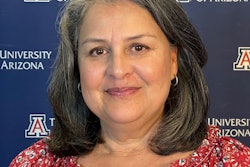LOS ANGELES – Radio commercials blare ranchera tunes, beseeching Mexican-Americans to fill out their census forms. Print ads with a portrait of a Thai family with a carved elephant in the background implore Thais to do the same. So does a Congolese basketball hero in another.
The ads scream stand up and be counted, and are designed to reach some of the most difficult to count communities across the nation.
“We wanted to make sure that in addition to being ‘in language,’ we were also ‘in culture,’” said Raul Cisneros, chief of the 2010 Census publicity office. “We’ve got to count everybody, so we’ve got to pull all the levers.”
During the 2000 Census, when the bureau used paid advertisements for the first time in its history, critics accused the agency of adopting an overly generic, one-size-fits-all approach in its efforts to reach minorities.
Speakers of Vietnamese, Persian, Hindi, Greek and other languages were not addressed in their native tongues. Billboards designed for continental-U.S.-based Hispanics were also deployed in Puerto Rico.
The same East Asian-looking family was used for ads targeting communities with heritage that reached from Pakistan to the Philippines.
“Smply having a poster of a Chinese-American family is not going to resonate. If you’re from India, you’re not going to say, ‘Oh, that’s my family.’”said Karen Narasaki, president and executive director of the Asian American Justice Center. “t’s much more sophisticated this time around.”
Ads promoting participation are appearing in 28 languages this year, up from 17 in 2000. Although minority groups make up just 26 percent of the population, more than half of the bureau’s $140 million ad-placement budget is going to campaigns that target them.
That expenditure is based on an understanding of how difficult it is to get many members of those groups to mail in their census forms and, for those that don’t, to cooperate with census takers who visit their homes.
“Minority populations are historically more difficult to reach,”said Phil Sparks, a former Census Bureau director who oversaw the 2000 ad campaign and now leads the Census Project, a nonpartisan census watchdog.
Language barriers keep some from filling out their forms, while others haven’t been in the country long enough to understand that congressional districts are drawn up and federal resources allocated based on the count.
Still others are wary of cooperating with a public agency like the Census Bureau because of fears over confidentiality or feelings that they’ve been neglected by the government in the past.
Last decade’s minority-focused ads helped boost response rates, Sparks said, but this census’ campaign should help even more.
“It’s much more sophisticated, it’s much more targeted and I think it will be that much more effective,” he said.
A print ad campaign targeting Asians, for example, swaps families that are identifiable members of their target markets into the same living-room backdrop, with culturally specific trinkets on their walls and mantles: a small wooden box with drawers for the Chinese family; a carved figurine of an elephant in the Thai ad; an ornamental bamboo tube on the wall of the Filipino home.
For U.S. radio markets with large Mexican communities, the Census Bureau set its Spanish-language message promising anonymity and a fair share of federal cash to a plaintive ranchero tune.
But for areas with a larger Dominican contingency, the agency set the message to a more lively, tropical bachata beat.
The ads aimed at blacks from sub-Saharan Africa, meanwhile, feature retired Congolese American basketball pro Dikembe Mutombo, who appears in posters and magazine spreads surrounded by children.
A different group of children, whose broad range of skin tones reflect the diversity of the Caribbean Islands, appear in the ads aimed at immigrants from that region. They surround a model that focus groups identified as convincingly West Indian.
African-Americans, meanwhile, were targeted using a TV spot with characters whose voices are muted until they mail their census forms.
Those last ads resonated with African-Americans because they played to perceptions among blacks that they’re not listened to by the members of the broader culture, said Damien Reid, vice president of GlobalHue, the firm that produced the ads.
Not all demographic groups got the same deep-bore approach.
The American Indian population was divided into four geographic zones instead of the more than 500 federally recognized tribal divisions with familiar-type landscapes featured in ads for target areas.
And among Arabic-speaking residents, the shared experience of feeling under suspicion in post-9/11 America was stronger than any cultural differences in their backgrounds, said Jalal Sayed, an account manager with Allied Media Corp., which produced ads for those groups.
In one Arabic-language ad, the central image is of the main character joining a multicultural cast in mailing his census form. The purpose was to show that Arab residents weren’t being singled out for surveillance by the census agency, Sayed said.
“It’s a tough sell in my community frankly because this is the first census since Sept. 11 and there are all these fears and concerns about racial profiling that have gone on over the last nine years,” said Helen Hatab Samhan, executive director of the Arab American Institute Foundation and a member of a committee that is advising the census on its ads targeting minority communities.
Samhan and other advocacy group leaders gave the census bureau high marks in its efforts to reach minority communities, but said there were still gaps in the communications strategy that they had to fill.
One particularly glaring omission, she said, was the lack of advertisements targeting the native-English speaking Arab community.
Her group, along with organizations representing the Hispanic and Asian communities, have independently produced English-language public service advertisements for their respective communities.
Urban League president and chief executive Marc Morial, who also sits on the advisory committee, said the census campaigns effectively stressed that communities need to be fully counted in order to receive their entire allotments of political clout and economic resources.
But he said the paid advertisements are no replacement for personal interactions with trusted community members.
“Sometimes it’s not only the message, it’s the messenger,” he said.















